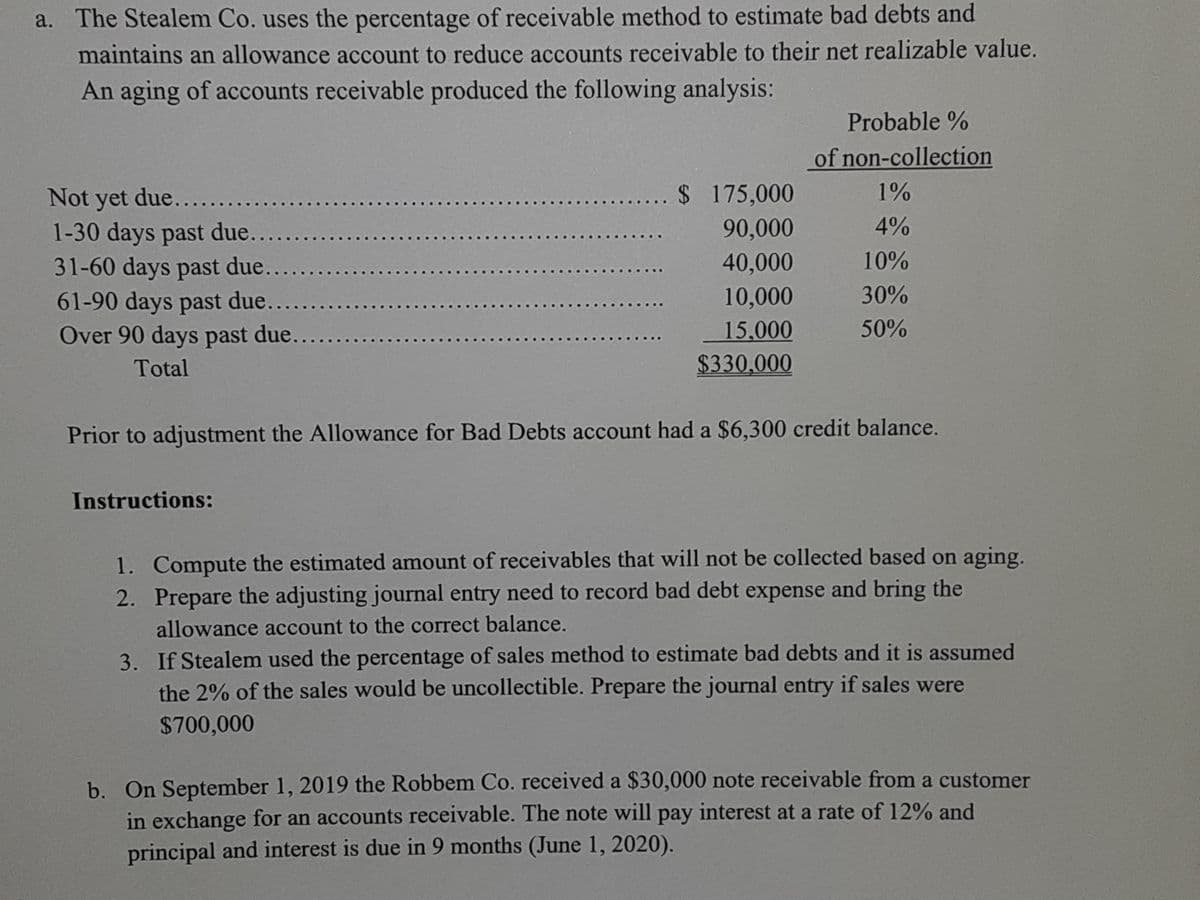The Stealem Co. uses the percentage of receivable method to estimate bad debts and maintains an allowance account to reduce accounts receivable to their net realizable value. An aging of accounts receivable produced the following analysis: Probable % of non-collection Not yet due………………………………………………… $ 175,000 1% 1-30 days past due………………………………………… 90,000 4% 31-60 days past due……………………………………….. 40,000 10% 61-90 days past due……………………………………….. 10,000 30% Over 90 days past due…………………………………….. 15,000 50% Total $330,000 Prior to adjustment the Allowance for Bad Debts account had a $6,300 credit balance. Instructions: 1. Compute the estimated amount of receivables that will not be collected based on aging. 2. Prepare the adjusting journal entry need to record bad debt expense and bring the allowance account to the correct balance. 3. If Stealem used the percentage of sales method to estimate bad debts and it is assumed the 2% of the sales would be uncollectible. Prepare the journal entry if sales were $700,000 b. On September 1, 2019 the Robbem Co. received a $30,000 note receivable from a cust
a. The Stealem Co. uses the percentage of receivable method to estimate
An aging of accounts receivable produced the following analysis:
Probable % of non-collection
Not yet due………………………………………………… $ 175,000 1%
1-30 days past due………………………………………… 90,000 4%
31-60 days past due……………………………………….. 40,000 10%
61-90 days past due……………………………………….. 10,000 30%
Over 90 days past due…………………………………….. 15,000 50%
Total $330,000
Prior to adjustment the Allowance for Bad Debts account had a $6,300 credit balance.
Instructions:
1. Compute the estimated amount of receivables that will not be collected based on aging.
2. Prepare the
allowance account to the correct balance.
3. If Stealem used the percentage of sales method to estimate bad debts and it is assumed
the 2% of the sales would be uncollectible. Prepare the journal entry if sales were
$700,000
b. On September 1, 2019 the Robbem Co. received a $30,000 note receivable from a customer in exchange for an accounts receivable. The note will pay interest at a rate of 12% and principal and interest is due in 9 months (June 1, 2020).
Instructions:
1. Compute the maturity value of the note.
2. Prepare the journal entry on September 1, 2019, the date the note was received.
3. Prepare the adjusting journal entry on December 31, 2019, to accrue the interest earned to
date


Trending now
This is a popular solution!
Step by step
Solved in 2 steps with 2 images







